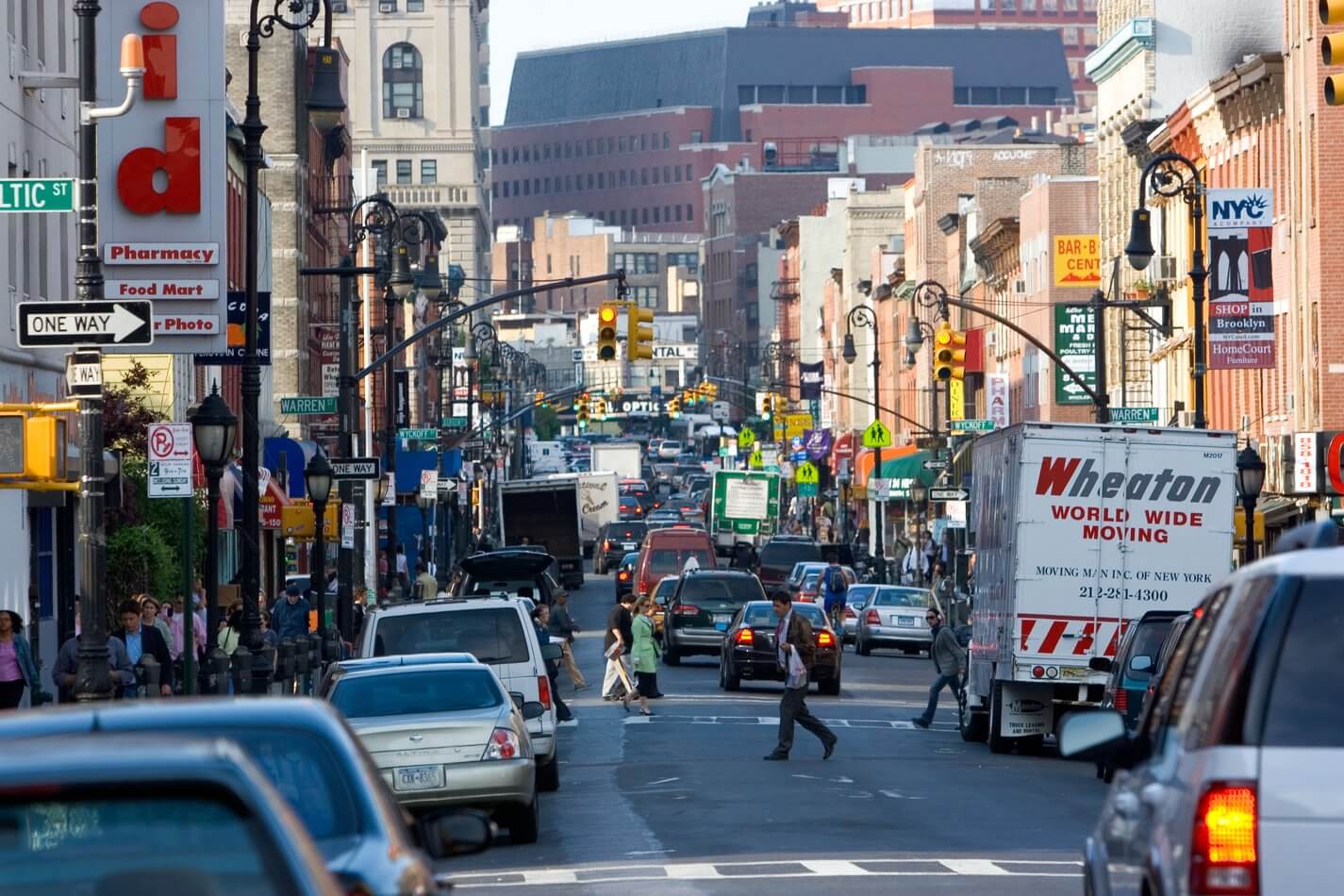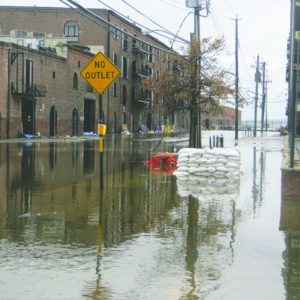As Dawn Casale, Smith Street Alliance co-chair, briefly opened the meeting, she welcomed everyone who had come out to learn about the Smith Street Business Improvement District (BID) formation process. For nine years, she has been advocating for a BID in the Court/Smith Street area, alongside a small group of other residents and local business owners. So by April 19, 2023, with about 15 attendees showing up to learn more about the proposed BID for Smith Street, her voice seemed tinged with weariness, and perhaps a bit of desperation for people to finally see what she sees—the BID’s potential to make the neighborhood better.
Overflowing trash on Smith
The idea for a BID in the area began almost a decade before the meeting. Casale, who owns One Girl Cookies on Dean Street, between Smith Street and Boerum Place, was commiserating with a friend and fellow business owner about the state of the neighborhood. The two were particularly frustrated by overflowing trash cans, which according to Casale, have only gotten worse over the years. Casale also owns a cookie shop in Dumbo, and so she knew that things did not have to be this way. In Dumbo, Dawn was used to feeling supported by the local BID, which at this point has been around for 16 years. Soon the business owners were attempting to organize their own BID on Court Street and Smith Street, though over the years they faced ups and downs, and ultimately narrowed the scope of the potential BID to Smith Street alone.
NYC has 76 BIDS
According to the NYC Department of Small Business Services, a business improvement district is “a geographical area where local stakeholders oversee and fund maintenance, improvement, and promotion of their commercial effort.” They act like organizations, and usually take the form of nonprofits, to administer services to the community via assessment fees, annual fees required of all commercial and residential properties within the BID. They also create a unified voice for the area, making them more effective in working with the city or local electeds than any single business. There are currently 76 BIDs in NYC (23 of which are in Brooklyn), which together invest more than $170 million annually into local economies.
The Smith Street Alliance (SSA) is the local group of residents seeking to create a BID along Smith Street from Pacific Street to 4th Place, or for the more visually minded—from Free People to The Art of Tint. These 16 blocks encompass about 200 businesses. As the SSA sees it, overflowing garbage, graffiti, rats, above average vacancy rates, crime, and lack of support for businesses are all prevalent issues along Smith Street, which could be better addressed by the creation of a BID.
Given that each BID provides slightly different services based on its area’s specific needs, SSA conducted a neighborhood assessments survey. Across 466 responses, sanitation (trash), greening / tree planting, and street sweeping were ranked as top priorities for BID services. Other services included security / public safety, street marketing / public events, advocacy with city government, residential community development, graffiti removal, and holiday lights and decorations.
Fees raised from tenants
SSA is proposing the BID will operate with a $350,000 budget, that will bump up to $400,000 by the fifth year of its existence. The assessment fees are based on a base per unit fee, differing by property type, plus additional fees based on street frontage and total area of the property. In practice, this looks like approximately $1,555 annually for a 3,000 square foot mixed use property with retail and residential, or about $68 annually for a residential condo. Nonprofits and government properties are exempt from all assessment fees. In the case of the Smith Street BID, commercial properties would be paying 85% of the BID budget.
BIDS have backing
At the April 19th meeting, Saloni Sharma, an SSA steering committee member, presented this background on BIDs and the goal of a Smith Street BID, before Joanna Tallantire, Executive Director of the Park Slope Fifth Avenue BID, took the stage to testify, very effectively, on the advantages of a BID. Perhaps nothing can be more persuasive to an American audience than a British accent and a bit of conviction, both of which were thoroughly provided by Tallantire as she calmly and deliberately explained all the benefits that the Park Slope Fifth Avenue BID has provided its community.
But not everbody in favor
Attendees then had an opportunity to bring up their own questions for the SSA and Tallantire. From here, it became clear that not everyone was sold on the idea of a BID. The audience ranged from a resident worried about noise increasing, to another resident hopeful that trash pick up could be improved; a former Assistant DOT Commissioner who believes that BIDs can be an excellent vehicle for working with the NYC Department of Transportation, to a former employee of the Manhattan Borough President’s Office who is convinced that BIDs are not always a solution to local problems. Nonetheless, while SSA claims that it wants broad-based community support for the BID, its formation ultimately rests in the hands of property owners.
Difficulties in
contacting owners
If SSA receives 51% of property owners in favor of the BID by June 30, they will move forward with submitting a district plan the NYC Department of Small Business Services, followed by a legislative phase to enter the BID into local law. There are 298 properties in the district, 212 of which are commercial/mixed use or vacant lots. SSA have received votes from only 60 properties, despite significant effort to reach them all. They have used the contact information available from public data sources, scoured proprietary data sources like Property Shark, sent six physical mailings to each property owner, and even followed up by email and phone, but the numbers remain low. According to Casale, many of the property owners are almost impossible to pin down, especially those who do not actually live in the area.
Absentee owners may kill it
“Will there be any more public events before June 30?” I asked Casale on the phone a few days after the meeting. No, for now it all comes down to if the SSA finally tracks down the remaining property owners to vote. Despite nine years of trying get Smith Street a voice at the city’s table, the fate of the area likely rests in the hands of people living far away.
Discover more from Red Hook Star-Revue
Subscribe to get the latest posts sent to your email.











